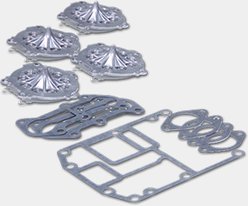Serious problems call for serious solutions, and there are few challenges facing our waterways today more serious than Aquatic Invasive Species.
An Aquatic Invasive Species (or AIS for short) is any organism – plant, animal or otherwise, including seeds, leaves, eggs or residue – that is not native to a particular aquatic ecosystem and may potentially cause harm to that ecosystem. Even experts have little way of predicting if or how much damage an AIS may do to a new environment, but many are in fact harmful to an alarming degree. Once an AIS is established there’s often no way of eliminating it. The spread of zebra mussels throughout North America is a prime example of an AIS that has forever changed every waterway it’s contaminated. This tiny, innocuous-looking creature is causing millions of dollars’ worth of damage every year with no end in sight.
Consequently, the only way to keep AIS in check is with aggressive prevention measures. In this video, you’ll see the type of AIS decontamination station that is being employed in some areas. At the station, a trained professional uses a combination of hot water and high pressure to ensure that no aquatic hitchhikers are on board a vessel.
First, the inspector flushes the boat’s running engine for two minutes with water heated to 100 degrees Fahrenheit – hot enough to kill or remove any AIS in the engine’s water passages, but not hot enough to harm the engine.
Livewells, baitwells, ballast tanks and the bilge are cleaned (with the recirculating pumps running) with 120-degree water for two to five minutes.
Each section of the exterior of the boat, trailer and engine lower unit is cleaned for 10 seconds with low-pressure 140-degree water. This includes the splash well, shallow-water anchors, trolling motor and jack plate. Special attention is paid to the contact points between the hull and the trailer bunks or rollers as these areas are prone to harboring AIS. This low-pressure washdown is followed by a full exterior pressure wash at 120 degrees to ensure that all organic matter is removed from every nook and cranny of the trailer and boat exterior.
Whether or not you have any such decontamination station in your area, it’s your job as a responsible boater to make every effort to ensure that you don’t transport AIS from one body of water to another. Another way you can help keep your boat from being a carrier of AIS is to give it a quick inspection and hand-cleaning every time you pull away from the boat ramp. This quick video will show you how. Your state natural resources agency is another great resource for information about AIS concerns and prevention in your area. For more comprehensive information about AIS and what you can do to protect our waterways, visit the United States Department of Agriculture’s National Invasive Species Information Center website.





















